- Home
- Nathaniel Philbrick
Away Off Shore: Nantucket Island and Its People, 1602-1890 Page 6
Away Off Shore: Nantucket Island and Its People, 1602-1890 Read online
Page 6
Nantucket officially came under the control of a specific mainland authority in 1664, giving Coffin and company plenty of opportunity to begin the settlement on their own terms. Significantly, it was not nearby Massachusetts but relatively distant New York to which Nantucket reported, and it was not until seven years later, in 1671, that Governor Lovelace established a direct relationship with the island by appointing Tristram Coffin as chief magistrate. From the beginning, Coffin and subsequent officials consulted off-island authority only when it suited their own purposes, paying the annual tribute of two barrels of “merchantable codfish” to New York on a somewhat irregular basis.
It may have been to help pay this tribute that in 1672 the island offered John Gardner “of Salem, Mariner, a seaman’s accommodation . . . to set up the trade of fishing with a sufficient vessel fit for the taking of codfish. . . .” Already on island were Gardner’s brother Richard (a seaman) and Richard’s son Joseph (a shoemaker), who had come to Nantucket five years earlier. From an established family in Salem, the Gardners brought with them economic ambitions and a political savvy that inevitably placed them on a crash course with Coffin’s vision of the island’s future.
Recognizing the advantages of the much larger harbor to the east, John Gardner established a home site “upon the highway at Wesco going down to the Landing Place” where he could operate his codfishing business far away (relatively speaking) from the nodal point established by Coffin at Capaum. Already in this general area was his brother Richard, who had built his home on what is now known as Sunset Hill. Thus was established a rival family enclave, but whereas Coffin represented the island’s original purchasers or full-share men, the Gardners were half-share men, a group of tradespeople that with John’s arrival had grown to the point that it almost exactly equalled the number of full-share men living on Nantucket.
So quickly did Gardner win the acceptance and trust of the community that in February 1673, he and his brother Richard were asked to represent the island in New York. Perhaps some of the townspeople, particularly the tradesmen whose half-share accommodations gave them no stake in the future distribution of land on the island, had grown weary of Coffin’s role as Nantucket’s self-appointed country squire. Inevitably, Coffin, who represented the interests of several full-share men who did not even live on Nantucket (most notably his son Peter), had a view of the island’s destiny that differed dramatically from that of the new arrivals.
Certainly there are indications that Coffin did not always see eye-to-eye with his fellow townspeople. In 1672 he protested the town’s determination that some Indians accused of having “cast away . . . Mr. Price’s vessel” be acquitted. The following year the wife of Edward Cottle was sanctioned by the court for “reproachful words” directed against Coffin. Mrs. Cottle felt that ever since the “death of her daughter’s child,” Coffin had encouraged “persons to speak more against her [daughter] than they know.”
For those such as Mrs. Cottle, for whom Coffin’s control over the island had become intrusive, the town was in need of a new order. And, to a certain extent, by so carefully orchestrating the original settlement of the town, Coffin had laid a trap for himself. Although the town would prove remarkably slow in reorienting itself to the larger harbor, the island’s future clearly lay to the east, and it was Gardner, a late-coming fisherman, who was in the best position (both geographically and occupationally) to take advantage of the shift.
Before we see how Coffin and Gardner would come to personify the forces of conservatism and change on early Nantucket, we must turn to its native inhabitants. No matter what ambitions the English might have for their community, it was still very much the Indians’ island.
CHAPTER 5
“An Island Full of Indians”: King Philip, John Gibbs, and Peter Folger
ALMOST BY DEFINITION, things were different on Nantucket. Instead of a Native American ghost town—which is what the Pilgrims had found at Plymouth—Coffin and his first purchasers bought “an island full of Indians,” at least according to Massachusetts Governor John Winthrop. If they were to make a go of this Nantucket enterprise, the English would have to deal with something the Puritans had never known: a Native American society at full, preplague strength.
Whether it was wishful thinking or a pragmatic solution of the quick-and-dirty variety, the English purchased the western end of the island from the two “Head Sachems of Nantucket”—Wanackmamack and Nickanoose. The problem was that although they may have been Nantucket’s two most powerful Indians, these two “Khaud” sachems lived on the eastern end of the island. Over the next eighteen years, western “Taumkhods” would demand (and receive) restitution for land that had been sold out from underneath them by Wanackmamack and Nickanoose.
Part of the problem was that English and Native Nantucketers had only a partial understanding of each other’s culture. Indeed, the entire notion of ownership, as assumed by the English, was foreign to the Native Americans. As Henry Barnard Worth has said, Land was to [the Indian] as free as the water or the air. Nobody could have exclusive right to it. So when the white men came and obtained deeds from the sachems it was merely the admission of the new settlers on equal terms with themselves. It was not that the Indian had ceased to have the right to enjoy the land but that another had become his co-occupant. Hence the idea that an Indian could be guilty of trespass was a strange innovation.
For their part, the English only gradually began to appreciate the complexity of Native American society on Nantucket. While there were two distinct groups of Indians on the island, both the easterners and the westerners looked to Wampanoag headquarters on the mainland to settle any major disputes between them, especially if they involved bloodshed.
But no matter what higher Indian authority the Khauds and Taumkhods appealed to, on-island English–Native American relations had to be governed by a mutually agreed upon set of rules. And since the English were not about to adopt the Indians’ ways, it was only a matter of time before they began to subject their Native American neighbors to what they considered to be “established law.” In order to formalize this process, the English requested that the governor of New York grant them “power to summon [the Indians] to our courts with respect to matters of trespass, debt, and other miscarriages, and to try and judge them according to town laws.” Having seen how poorly the indiscriminate use of such power had worked in eastern Long Island, the New York authorities recognized the potential perils of applying a completely foreign group of laws to another culture. Governor Lovelace warned the English “that they be careful to use such moderation amongst them, that they be not exasperated, but by degrees may be brought to be conformable to the laws.” As we shall see later, it was here, in the courts, that Native Nantucketers would become not only acquainted with English law but also increasingly victimized by it.
At the outset, however, the Indians had one undeniable advantage: their numbers. If they became sufficiently “exasperated,” the English would be the ones to suffer the consequences since they were outnumbered by more than twenty-five to one. And as the legends from the pre-English era made clear, in times of war there was no place to hide on this sandy island thirty miles out to sea. As a consequence, a remarkable degree of cooperation seems to have existed between the two cultures, particularly when compared to the rest of New England. When the town decided to dig the Madaket Ditch referred to in the first chapter, it was designated a joint Indian-English project. As we have seen, genuine efforts were made to appease those Indians who claimed that their land had been illegally sold. Complaints against English cattle interfering with native crops also seem to have been conscientiously attended to during the first decade of the settlement. But there was yet another factor contributing to the complexity (and potential danger) of English–Native American relations on Nantucket, one that many of the English had come to this island hoping to escape: the matter of religion.
Even before Thomas Macy first arrived in Madaket, the Mayhews of Martha’s
Vineyard had converted a significant number of Nantucket’s Native Americans to the Christian faith. According to the missionary Daniel Gookin, these Indians were quite “poor,” which tended to make them “more readily receive the gospel and become religious.” As Gookin suggests, Indians generally adopted Christianity not from a position of strength but out of desperation. As might be expected, those who maintained their traditional beliefs tended to view the Christianized or “praying Indians” as sell-outs.
Less than five years after the arrival of the English, an event occurred that pointed not only to the divide between traditional and Christian Native Americans but also to the fact that no matter how hard both the English and Indians might try to work with each other, Nantucket was not immune to violence. The leading “praying Indian” on Martha’s Vineyard was Hiacoomes, and in 1664 his son Joel was on the verge of receiving a degree from Harvard. After sailing to the Vineyard to visit his family, Joel was on his way back to Cambridge for the commencement when he and “other passengers and mariners” were shipwrecked on Coatue. According to Gookin, “the bark was found put on shore; and in all probability the people in it came on shore alive, but afterwards were murdered by some wicked Indians of that place; who, for lucre or the spoil in the vessel, which was laden with goods, thus cruelly destroyed the people in it.”
As to be expected, these murders threw both the English and Indians on the island into a panic. Since the killings had occurred in his territory, sachem Nickanoose was immediately under pressure to prove that he had had nothing to do with the incident. According to testimony entered into the Nantucket town records by William Worth, “Nickanoose being accused of being privy to a murder committed by the Indians on English men at Coatue and being in great fear he hired or otherwise got Quaquachwinnit to go with him to Plymouth in the winter to ask council of Nickanoose’s head Sachem.” Notice that it was not the death of Joel, despite his status as a leading Christian Indian, that put Nickanoose in such “great fear”; rather it was the murder of the white men.
At this time the head of the Wampanoag was Metacom (better known in popular history as King Philip) who had just recently attained the sachemship after the death of his brother Wamsutta (called Alexander by the English). Philip apparently passed sentence on the offenders, and, according to another reference in town records, “Indians were hanged on Nantucket . . . in the year 1665.” This, however, was just the beginning of a community psychodrama that would help determine the future course of English–Native American relations on Nantucket.
Whether or not it was the execution of Nickanoose’s men that originally brought him to the island, Philip himself appeared on Nantucket in the fall of 1665. By the time of his arrival, his intentions had apparently shifted to the apprehension of yet another Native Nantucketer—Assassamoogh (also called John Gibbs), a leading Christian Indian who, according to one traditional reference, had, like Joel, spent some time at Harvard. Gibbs’s crime was that of speaking the name of Philip’s deceased father, Massasoit. According to Obed Macy, “Rehearsing the name of the dead, if it should be that of a distinguished person, was decreed by the natives a very high crime, for which nothing but the life of the culprit would atone.” For Philip, who resolutely refused to adopt Christianity, it was an inspired test case: the life of a praying Indian who had broken a sacred Indian law for the lives of several traditional Indians who had broken English law.
Philip and his party of war canoes are said to have arrived at Low Beach on the southeastern end of the island. Although he was only twenty-five years old, Philip was every inch a Native American king. Two years before his appearance on Nantucket, he was spotted by the English travel writer John Josselyn as he strutted through the streets of Boston: “[He] had a coat on and buckskins set thick with these beads in pleasant wild works and a broad belt of the same. His accoutrements were valued at twenty pounds.” This was clearly a man to be reckoned with.
It did not take Philip long to find his quarry near a pond in the eastern part of the island that still bears the Indian’s name—Gibbs. By this time the English had been alerted to the sachem’s presence and at least some of them rode out across the Moors to find Philip preparing for the execution amid a crowd of local Indians. At this point the English “commiserated [Gibbs’s] condition” and, according to Obed Macy, “made offers of money to ransom his life.” Displaying a very kingly willingness to compromise his principles at the right price, the young sachem named a figure. Unfortunately, it was well beyond the Nantucketers’ means. In an effort to postpone the inevitable, the English proposed that they return to the settlement to collect as much money as possible. It also appears that Philip, his entourage, and their prisoner returned to town with them.
After passing around the hat, the English came up with the paltry sum of eleven pounds. Philip was not impressed and threatened drastic action if the amount he had originally demanded was not quickly raised. By this point he and his men had, according to Macy, “surrounded and taken possession of one or two houses, to the great terror of the inmates.” Throwing caution to the wind, the English decided to call Philip’s bluff. If he did not leave the island immediately, they would “rally the inhabitants” and annihilate Philip and his warriors.
With the eleven pounds in hand and no way of knowing exactly how many whites were actually on the island (in fact fewer than thirty families, or about 100 men, women, and children), Philip took to his heels, beating a hasty retreat to his canoes on the other side of the island. John Gibbs was once again a free man.
That Philip was indeed on the island is indicated by an entry in the town records dated October 10, 1665: “At a public meeting of the town, Attapehat signified that himself with all the Tomokommoth [Taumkhod] Indians doth subject to the English government of Nantucket. Do own themselves subject to King Charles the Second. This was done in the presence of Metacom alias Philip Sachem of Mount Hope.” There is no way of knowing if this town meeting occurred at the same time as King Philip’s attempted execution of John Gibbs. It is difficult to believe that the tense sequence of events Obed Macy described would have allowed for an impromptu town meeting. In fact, Philip may have made two different appearances on the island during the 1660s. Whatever the case may be, the incident involving John Gibbs may have helped to bolster Indian-English relations on the island. Many of Nantucket’s Indians, despite their traditional ties to King Philip, were undoubtedly more than a little impressed by the fact that the English were willing to endanger their own lives to protect the life of a local Indian.
Although Macy speaks of the English collectively in his account of the incident, there was only one man on the island fluent enough in the Wampanoag language to undertake what must have been extremely tense and complicated negotiations, and who by his own testimony in 1677 had been “interpreter here from the beginning of the plantation, when no English man but myself could speak scarce a word of Indian.” His name was Peter Folger, and ever since his arrival on the island as a permanent resident in 1663 (after almost twenty years on Martha’s Vineyard as an instructor to the Indians), he had been the one who had overseen relations with the Native Americans. As he wrote to New York Governor Andros, “I am sure some of these men . . . had felt arrows in their sides . . . had I not stepped in between them and made peace.”
Folger’s personal ties to Philip’s intended victim may have been especially close. Assassamoogh’s English name of John Gibbs was also that of Folger’s maternal grandfather—the result, according to tradition, of a Folger-officiated baptism in the waters of Gibbs Pond. Folger’s relationship to Gibbs helps to explain the resolution of the English in the face of Philip. As the Indian’s mentor, he was not about to let him die for a sin that from the English perspective seemed relatively inconsequential, especially given Philip’s evident willingness to take money in exchange for Gibbs’s life.
Just how important the standoff with Philip was both to Folger as an individual and to Nantucket as a community is made plain by a bal
lad the interpreter wrote more than a decade later in 1676. By the time Folger wrote “A Looking Glass for the Times,” much had changed since that tension-filled confrontation beside Gibbs Pond. Philip was now in the midst of what would become known as King Philip’s War—a bloody and desperate series of uprisings against what the historian Francis Jennings called the Puritans’ “righteous zeal and unrighteous covetousness” that would only accelerate the mainland Indians’ slide into “subjugation and debauchery.” But while New England burned, the view from Nantucket was relatively serene. Despite having the highest concentration of Indians in the region, the island had experienced none of the violence with which Philip had threatened them a decade earlier. In fact the town record from 1675 reads, “Old Merchant, Skipper, Miaskpo, George Haye, Cross Herry, Pottoser, Sapachaset, and Maosaaquat did come to court and did disown Philip and did freely subject themselves to King Charles the Second.”
For Folger, whose Baptist beliefs meant that he was no friend to the religious intolerance of Puritan New England, there was a lesson in this. New England was suffering the consequences of forty years of religious persecution, and it was time the Puritans changed their ways. Rather than killing Indians, the New Englanders should become more tolerant of others, for “to scorn and domineer/To pride it out as if there were/Not God to make us fear” was conduct hardly becoming a Christian. At one point in the poem, which Folger’s more famous grandson Benjamin Franklin praised for its “decent plainness and manly freedom,” there is a reference that brings to mind that tense scene of 1665:When Jonathan is called to court
Shall we as standers by
Be still and have no words to say
To suffer him to die?

 Bunker Hill: A City, a Siege, a Revolution
Bunker Hill: A City, a Siege, a Revolution Why Read Moby-Dick?
Why Read Moby-Dick? Second Wind: A Nantucket Sailor's Odyssey
Second Wind: A Nantucket Sailor's Odyssey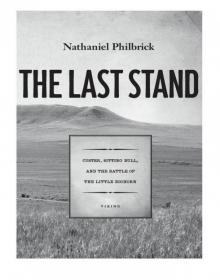 The Last Stand: Custer, Sitting Bull, and the Battle of the Little Bighorn
The Last Stand: Custer, Sitting Bull, and the Battle of the Little Bighorn In the Heart of the Sea: The Epic True Story That Inspired Moby-Dick
In the Heart of the Sea: The Epic True Story That Inspired Moby-Dick Away Off Shore: Nantucket Island and Its People, 1602-1890
Away Off Shore: Nantucket Island and Its People, 1602-1890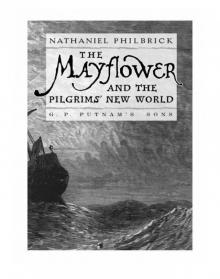 The Mayflower and the Pilgrims' New World
The Mayflower and the Pilgrims' New World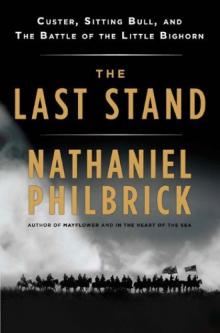 The Last Stand: Custer, Sitting Bull and the Battle of the Little Big Horn
The Last Stand: Custer, Sitting Bull and the Battle of the Little Big Horn Second Wind
Second Wind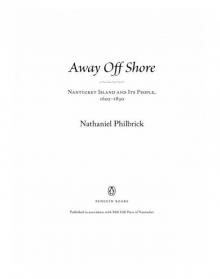 Away Off Shore
Away Off Shore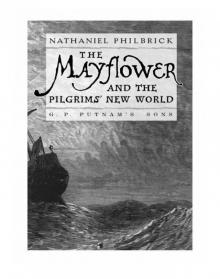 The Mayflower and the Pilgrims' New World*
The Mayflower and the Pilgrims' New World* Sea of Glory
Sea of Glory In the Heart of the Sea
In the Heart of the Sea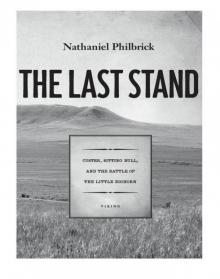 The Last Stand
The Last Stand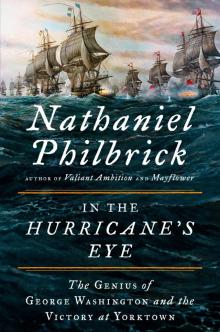 In the Hurricane's Eye
In the Hurricane's Eye